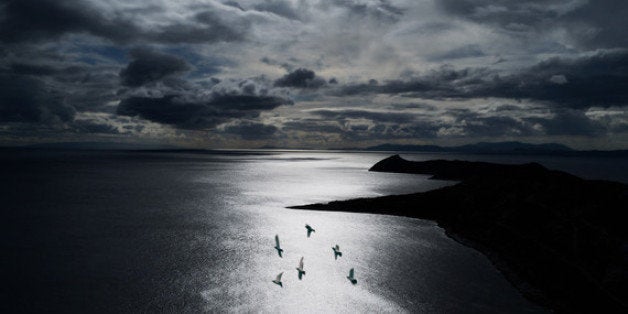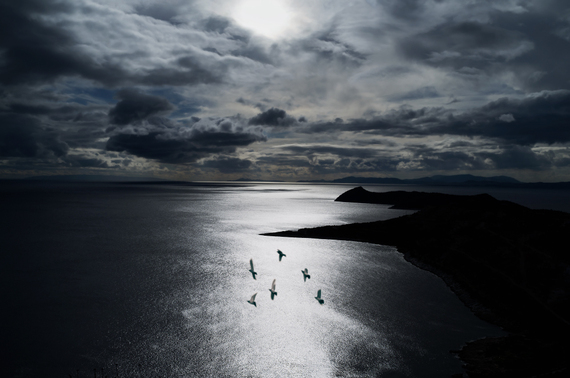
Who are we?
If we have no past to be connected with - for what is gone is forever gone - and if we have no future to expect - for future exists only as a possibility. What are we left with when we realize that neither the past nor the future are measurable units. When we realize that our existence is so frail that we are not able to stretch ourselves more than the space occupied by a single moment. What can we really be identified with, when there is nothing there for us to attach ourselves to?
Plato, in his work Cratylus, states Heraclitus' proclamation on eternity : "No man ever steps in the same river twice, for it's not the same river and he's not the same man." Heraclitus was a pre-Socratic Greek philosopher who lived his life in Ephesus, in the sixth and fifth century BC. His way of thinking left a indelible mark to all the generations who followed. His texts, sometimes a little obscured and intuitive, approach these fundamental existential questions with a liberating calmness. His phrase "Everything flows" became an aphorism that still touches our hearts with the wisdom of a bigger and simpler truth.
The past is never present, nor is the future. It is our mind that creates a timeline for our reality to be projected. This is a survival skill, something that permits us to deal with the outside world in a more effective way. Despite the practical aspect of this, when we embrace it with an existential desire for self determination, it can only be misleading. It is because the past cannot be self-defined since it doesn't exist as a standalone dimension. It can only be conceived through what our mind decides to include. This timeline, which consists our perception of the past, can only be sensed and approached through the events it accommodates. There is no way for us to sense the past without having certain events to refer to. An uneventful timeline is a blank space.
"Eternity is not an extension of time but an absence of time, a point with no width, occupying no space," said once Graham Greene. There is only one dimension that is not mentally conceived and it can be fully sensed and approached by our senses. This is the present, everything that can fit inside a single moment.
If reality is a projection of our mind, then it constitutes an image. It is something that reveals the unique aspect that images have. Especially when it comes to photographs and their emotional connection with the preservation of memory.
An image can provide us with a more delicate description of how a moment feels like. Not the moment that takes place within a specific space and time, but the moment that lies inside us in the most personal dimension. In every culture and language around the world, when we express the deepest of our needs or desires, we always place that wish within a single moment. When we're sad we ask for a moment of joy, when we're tired we wish for a moment of rest, in our pain we beg for a moment of relief. We never ask for a specific amount of time, only for that single moment. In other words, we always crave to release ourselves from the confines of time and space. It can only happen within the time period of a moment, for this is where lies the deepest expression of our existence. And if our mind is bound to time, our soul remains always free, within the intuitive eternity of this very moment.
Photographs are a reflection of eternity that fits into a single moment.
it is so touching to call this a memory.
●
Image on top : Ardor . Attica, Greece | by petroskoublis.com

